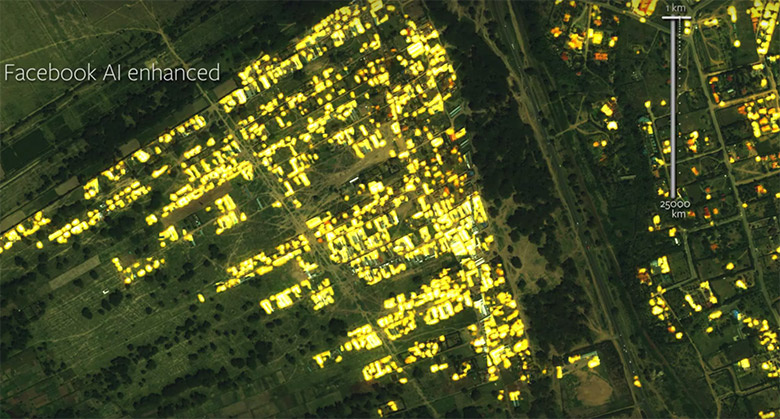Facebook made a map of the population of 23 countries with a resolution of 5 m

The company Facebook with the help of proprietary AI system made an accurate map of the location of the inhabitants of the Earth with an accuracy of 5 meters. The map of human clusters needs Facebook in order to more effectively provide its services. It will also help other companies to plan the development of networks, including for access to the Internet. For example, in areas with a high concentration of people, WiFi hotspots are better suited, and with low concentrations, cellular communication.
In the future, Facebook itself plans to launch an Internet access system via satellites and high-altitude drones, so the company needs to know how the density of people on the planet is distributed.
For the first time, Facebook representatives spoke about this AI project in February 2016 . At that moment, the map was ready for 20 countries of the world, and now their number has increased to 23, an employee of the company said in a comment for CNBC .
The program made a map by combining data from state censuses in different countries with high-resolution satellite images. The AI learned to automatically recognize the buildings erected by a person in the photographs and “impose” people on residential buildings. The man has built up buildings with less than 1% of the land area. It was not easy to train a neural network on such an unbalanced data set, but the work was completed with success, so now the AI successfully copes with the task.
For mapping the first 20 countries, 350 terabytes of photographs were processed from an area of 21.6 million km². Neural networks of the AI system were launched simultaneously on thousands of servers. They scanned 14.6 billion satellite imagery — and found all the human buildings.
For its future Internet access project via satellites and drones, Facebook is now hiring aerospace engineering engineers . Jobs are open, so that Russian experts can also find use for their forces.
Projects to launch a massive grouping of their satellites are being hatched by many commercial companies. Such plans became real due to a drastic reduction in the cost of putting satellites into orbit, and in the future prices promise to continue falling. It can be expected that in the coming years the number of satellites in orbit will increase many times. Now there are 576 US satellites, including 286 commercial ones.
